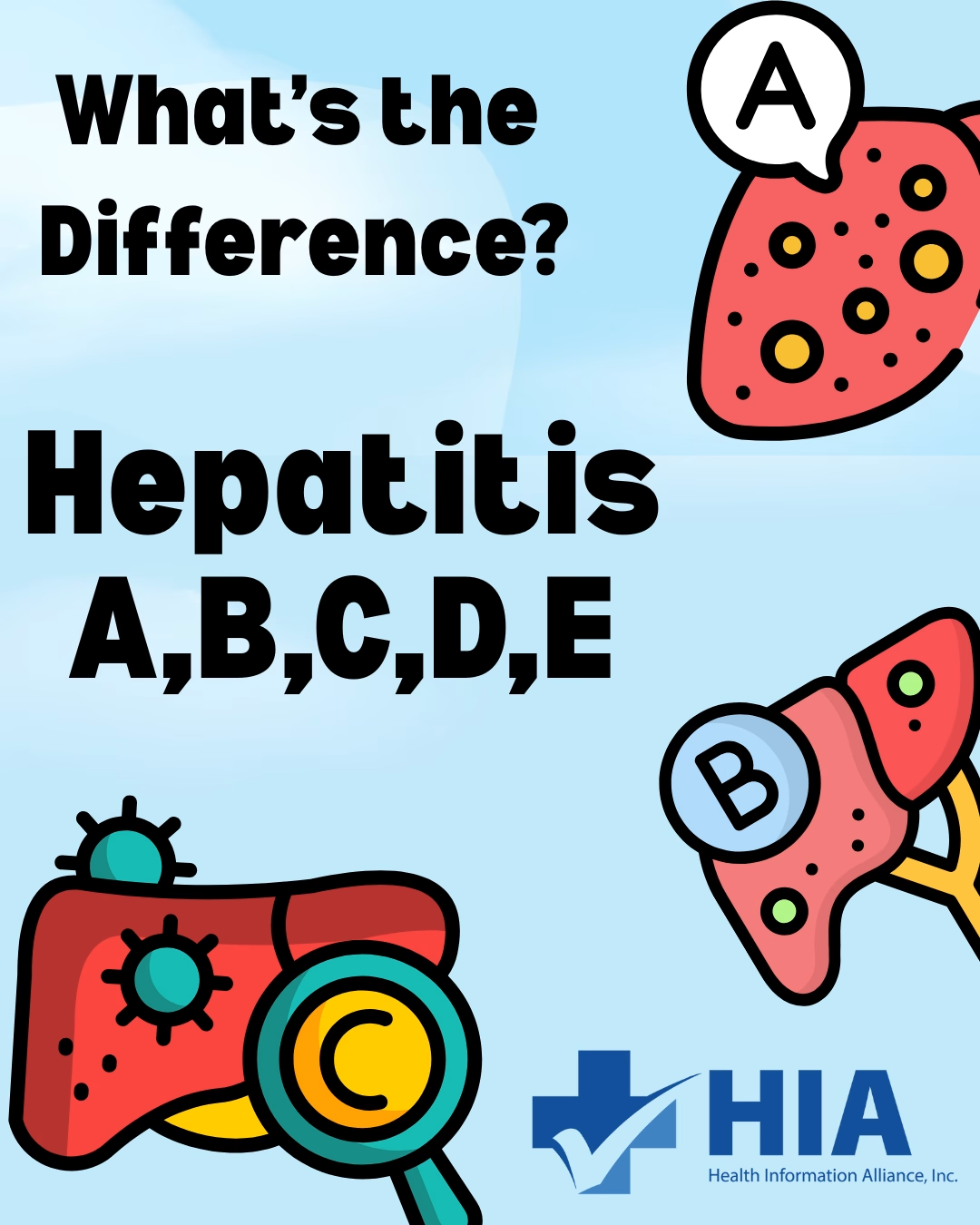What’s the Difference?
Understanding Hepatitis A-E
Hepatitis is a medical condition characterized by inflammation of the liver, which plays a vital role in filtering toxins, aiding digestion, and storing nutrients. While hepatitis can be caused by non-viral infections and stem from alcohol, medications, or autoimmune disorders, the most common forms result from viral infections. There are five primary hepatitis viruses; Hepatitis A, B, C, D and E. While all under the same principal, how each can be obtained and their effect on the Liver is vastly different.
Hepatitis A: People get hepatitis A when they ingest the virus (HAV). Hepatitis A is typically transmitted through consumption of contaminated food or water. In some cases, from close personal contact involving poor bathroom hygiene. It’s an acute infection, meaning it doesn’t become chronic unlike other Hepatitis viruses. Symptoms include fatigue, jaundice (the yellowing of skin), and abdominal pain noted on the upper right side. The liver’s ability to filter toxins, produce bile, and regulate metabolism may become temporarily impaired. Most people recover fully and a vaccine is available and effective for prevention.
Hepatitis B: People get Hepatitis B, a serious liver infection caused by the virus (HBV). Hepatitis B is typically transmitted through contact with infected blood, sexual/bodily fluids. In some cases, spread through contact with open sores or sharing personal items such as a razor. HBV can be either acute or chronic. In acute cases, the immune system is able to clear the virus, and the infection resolves on its own within roughly six months. Chronic hepatitis B may lead to a lifetime of infection including, cirrhosis (liver scarring), liver cancer and or failure. Vaccination is widely recommended and highly effective.
Hepatitis C: is primarily spread through blood-to-blood contact especially via shared needles or other tools not properly cleaned. The virus enters the bloodstream and travels to the liver, where it infects liver cells and begins to multiply. It often becomes chronic; unlike hepatitis A and B. The virus can lay dormant for years and cause inflammations. Recent advances in medicine have made hepatitis C curable for most people.
Hepatitis D: Also known as Hepatitis Delta or HDV can only occur in people already infected with hepatitis B (HBV). HDV needs the Hepatitis B virus to replicate once in the liver. Co-infection can cause more severe illness and a higher risk of complications. This damage can be much more severe than with hepatitis B alone, often leading to faster progression of liver disease including, cirrhosis (liver scarring), liver cancer and or failure. While no cure specifically for Hepatitis D, the Vaccine for HBV can help blocking the co-infection pathway.
Hepatitis E: People get hepatitis E when they ingest the virus (HEV) is similar to hepatitis A in that it’s transmitted through contaminated food or water, mostly in regions with poor sanitation. Once the virus enters the body, it travels to the liver and causes inflammation. Hepatitis E is a self-limiting illness, meaning it usually goes away on its own within a few weeks. A vaccine exists in some countries, but it’s not widely available.






